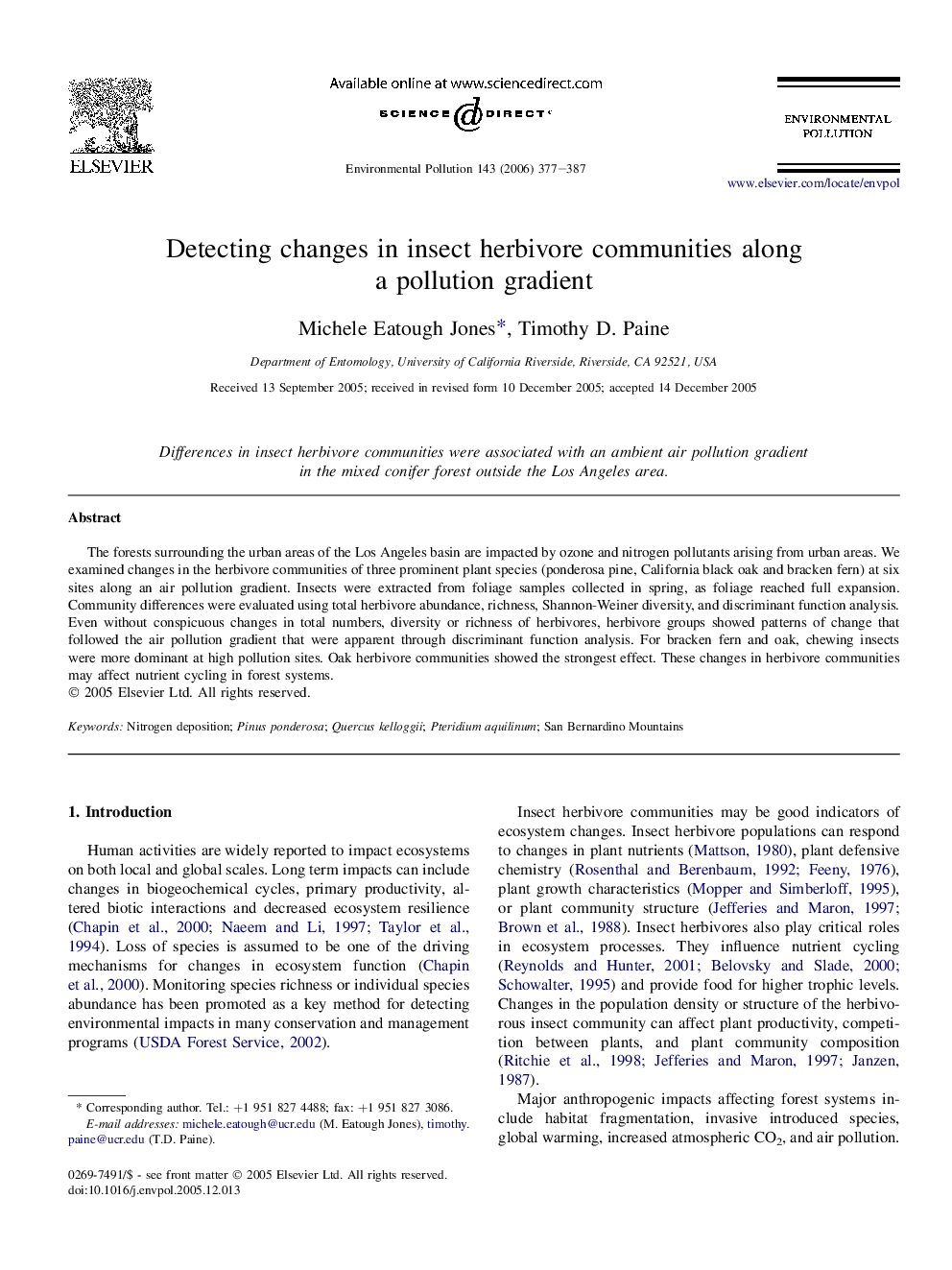| Article ID | Journal | Published Year | Pages | File Type |
|---|---|---|---|---|
| 4427692 | Environmental Pollution | 2006 | 11 Pages |
The forests surrounding the urban areas of the Los Angeles basin are impacted by ozone and nitrogen pollutants arising from urban areas. We examined changes in the herbivore communities of three prominent plant species (ponderosa pine, California black oak and bracken fern) at six sites along an air pollution gradient. Insects were extracted from foliage samples collected in spring, as foliage reached full expansion. Community differences were evaluated using total herbivore abundance, richness, Shannon-Weiner diversity, and discriminant function analysis. Even without conspicuous changes in total numbers, diversity or richness of herbivores, herbivore groups showed patterns of change that followed the air pollution gradient that were apparent through discriminant function analysis. For bracken fern and oak, chewing insects were more dominant at high pollution sites. Oak herbivore communities showed the strongest effect. These changes in herbivore communities may affect nutrient cycling in forest systems.
